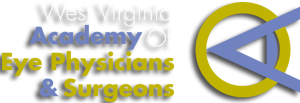- Details
There has been intriguing and protracted controversy over what conclusions and treatment recommendations can be drawn from the Age-Related Eye Disease Study (AREDS) experiment. Based on data from this one experiment, the AREDS study group and Awh et al have come away with very different conclusions.1–3 On the one hand, the AREDS Study group recommends that the AREDS formulation is beneficial to individuals with intermediate macular degeneration.2,4 On the other hand, based on genetic subanalysis of the AREDS data, Awh et al suggest that, for patients with certain combinations of CFH (rs412852 and rs3766405) and ARMS2 (c.372_815del443ins54) risk alleles, the AREDS formulation may actually worsen outcomes.
- Details
We appreciate that Drs Awh and Zanke are concerned our findings differ from theirs on the need for genetic testing when using the Age-Related Eye Disease Study (AREDS) supplement.1 Fortunately, there have recently been several independent reviews of this issue that have all provided thoughtful insight and all conclude that genetic testing is not recommended for determining treatment with AREDS supplement at this time.
- Details
The journal Science gained national attention in March 2015 with a news feature on the winner of the National Eye Institute's Audacious Goal Initiative competition. The National Eye Institute's winning choice was “to regenerate neurons and neural connections in the eye and visual system.” The article, entitled “Second Sight: Eye Transplants Are Science Fiction. A Team of Researchers Wants to Change That,” implies this goal is within reach in the foreseeable future.1
- Details
Thyroid eye disease (TED) has been found to reduce quality of life for many patients because of changes in their appearance and vision, although some seem to adjust better than others. This study was designed to investigate whether a patient's quality of life changes after having orbital decompression for improvement of appearance, vision, or both, and whether any demographic, clinical, or psychosocial factors can predict which patients might benefit from this surgery.
- Details
The field of retina has evolved dramatically over the past decade with the advent of novel pharmacotherapeutics, diagnostic modalities, and surgical techniques. Reflecting this growth in scope and complexity, several subdivisions within retina have been on the increase, particularly dedicated medical retina fellowships.
Read more: Self-Reported Characteristics of Retina Specialists in the United States
- Details
To assess case-finding performance of the Frequency Doubling Technology Perimeter (FDT) (Carl Zeiss Meditec, Inc., Dublin, CA), Moorfields Motion Displacement Test (MMDT) (Moorfields Eye Hospital, London, UK), iVue optical coherence tomography (OCT) (Optovue Inc., Fremont, CA), and ocular response analyzer (ORA) (Reichert Ophthalmic Instruments, Depew, NY), alone or combined, for primary open-angle glaucoma (POAG).
Read more: Diagnostic Accuracy of Technologies for Glaucoma Case-Finding in a Community Setting
